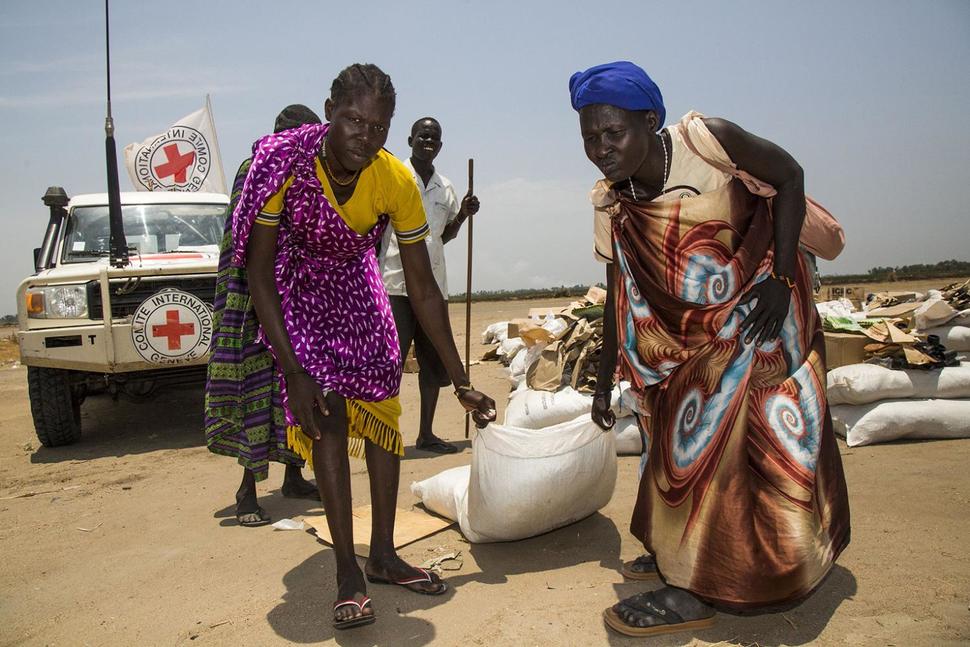Ongoing drought and conflict in the Horn of Africa have left 14.4 million people in need of food assistance in Ethiopia, Kenya, and Somalia. Drought conditions in the region have led to crop failures, weakened agricultural sectors, water shortages, and widespread hunger requiring international assistance and humanitarian action. The region has a history of severe weather, drought, and famine — a famine resulted in the deaths of 250,000 people in 2011, and water shortages and stunted agriculture have threatened the country since.
Seasonal rains arriving in mid-April and spreading throughout the Horn of Africa in May bring hope for relief from the drought’s most severe effects, although these rains also pose a threat to some living in the region. According to Relief Web, the rains have primary affected the “central, northwestern and southeastern Kenya, Uganda’s Karamoja region, and southern and central Somalia.” In Kenya, heavy rains have resulted in flooding and landslides. April rains also caused flash flooding in Somalia, but the IGAD Climate Prediction and Applications Centre has predicted that the country will see minimal rainfall in May.
Although seasonal rainfall has arrived in these areas, it is unlikely that it will be sufficient to draw the region out of its long and severe drought. In fact, sources predict that overall rainfall will be below-average this season. According to the Intergovernmental Authority on Development’s Climate Prediction and Applications Center (ICPAC), “What makes the current drought alarming in the Equatorial Greater Horn of Africa region is that it follows two consecutive poor rainfall seasons in 2016, and the likelihood of depressed rainfall persisting into the March-May 2017 rainfall season remains high.”
If rainfall does not increase, the agricultural and economic impacts of the drought will continue to affect the region. Although large-scale humanitarian relief efforts led by organizations such as the World Food Programme (WFP) have had a positive impact, they have been insufficient to reach all those who are suffering in the region’s drought-affected areas. Funding deficits, the dangers of conflict areas, and roadblocks restricting travel have all hampered aid efforts. Meanwhile, 10.7 million people face severe hunger in Ethiopia, Kenya, and Somalia. Those most at risk include nomadic pastoralists, who travel throughout the region relying on livestock and agriculture for survival.

Droughts have also led to health crises in the region. According to UNICEF, 3.4 million children are at a high risk of contracting measles in the drought-affected areas of the Horn of Africa today. Unfortunately, seasonal rains have the potential to exacerbate health risks like these. Rains can lead to cold weather and the spread of diseases like cholera, both of which are particularly threatening to those whose immune systems have been weakened by malnourishment. According to the World Health Organization (WHO), over 25,000 have been infected by Cholera in the country this year. As health systems in the region are weak, many rely on the care of international organizations and non-profit organizations for treatment of these diseases.

Ethiopians, Somalis, and Yemenis have been displaced as a result of the crisis, many traveling to settlements and refugee camps throughout the region. In Somalia alone, there have been over 650,000 drought-induced displacements. The country is home to roughly 220 settlement sites, and of these, more than 40% have reported food shortages and only 31% are within a 20 minute walking distance of a fresh water source.

The Ethiopian government currently houses close to 800,000 displaced persons from surrounding countries, including those from Ethiopia escaping drought and conflict. One settlement can house between hundreds and thousands of displaced persons, many of whom face severe malnourishment or require medical attention.
International organizations such as Oxfam International argue that climate change has exacerbated both the drought and humanitarian crisis the the Horn of Africa region. Oxfam cites a trend of increasing temperatures in the region since the 1980s, pattern of cattle deaths, and severe weather patterns as evidence of this trend.